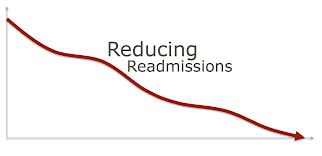 Do you have information junkies in your support group?
Do you have information junkies in your support group?
- Utility is reference-based and not additive
- Transparency or lack thereof
- How can we close the relationship gap in our support groups?
- How messaging technology makes us less available
- Two anecdotes of how digital technology works in patient communications
- Speculations on system design alternatives for support group sharing
- Controlled literacy and negotiated primary response times
It happens all the time.
 Do you have information junkies in your support group?
Do you have information junkies in your support group?
It happens all the time.
You have a support group member who always shows up a few minutes early armed with notes and lists of questions. You have members who are always online and seeking information – and never satisfied with what they find. Then there are the support group members who actively participate but are never satisfied with the content shared in the support group.
Information addiction is a common problem with support group communications.
A study in the Tel Aviv Medical Center examined the phenomenon of perceived information quality and availability after realizing that in the hospital, many family members felt they were not getting answers – even though the doctors and the medical staff felt that they (the staff) provide them (the patients and family members) with lots of information via interaction in the hospital, by phone, email, at the bedside and in formal letters.
The data from the hospital showed a gap between what the staff were doing and patients/family members prevalent perception that are getting no valuable information at all from the hospital staff.
The study uncovered that when family members and patients do have a private, face-to-face meeting with a doctor in the quiet of the office, they almost always feel that they have been given valuable information, even if they are unhappy with the answers or want to seek a second opinion.
The key seems to be the setting of how the information is provided and not the quality or essence of the information itself. Why does this happen? We can understand this by studying framing effects.
Utility is reference-based and not additive
As prospect theory predicts, utility (the value of a product or service) is reference-based and not additive.
What does that mean?
Reference-based value means that more data from medical staff and support groups is less valuable than data received when the frame of reference is a private consultation with a specialist.
Framing favors patients overrating the physical visit with a doctor and underrating generally available digital communications in social media and online search.
Framing effects may also be related to cultural and societal factors. In countries where doctors function within a hierarchy, patients will tend value personal visits to specialists over email, social media, Dr. Google and online patient forums.
Framing effects create mismatched perceptions and expectations in an asymmetric relationship – where patients (at the bottom of the totem pole) get information but do not value it and doctors (the experts at the top of the totem pole) provide information and expect the patient to value the information and become frustrated when the patient downgrades the value of their messages.
Transparency or lack thereof
A second and perhaps more crucial reason for the gap between patient-perception of doctor-provided information is lack of transparency. In the Fall 2012 issue of the Johns Hopkins Magazine article “Hospital heal thyself” we read the story of Marty Makary:
Marty Makary hopes to inspire more doctors, nurses, and hospital administrators to bare their souls. “I’m trying to break down the closed-door culture of medicine.” …“People are increasingly frustrated by the entire health care system,” says Makary, a slight man with a deliberate and direct way of talking. “The culture of medicine, the way we do what we do, is the giant elephant in the room. It should be transparent, yet it isn’t.”
Implementation of total information transparency at Hopkins is having outstanding results, although I imagine that doctors in other hospitals inside and outside the US are asking themselves if they can afford to be that open.
Closing the gap between doctor messages and patient assessment of quality is critical to patient satisfaction, improving the patient-doctor relationship and achieving better outcomes.
How can we close the relationship gap in our support groups?
The Americans are trying to solve healthcare problems with technology with meaningful use of EHR systems which are all based on enterprise software models and use cases designed by IT professionals.
I would not look for a solution in enterprise software. An standard enterprise software data entry form and query CRUD (create, read, update and delete) application suite has very little to do with medicine or human-human relationships.
Putting a tablet at every bedside and rendering all the clinical discussion regarding the patient may go a long ways towards achieiving information transparency but patient-doctor asymmetry and framing effects on utility are not issues of digital technology, user interfaces nor of EHR systems.
Indeed – if we analyze how people use mobile technology, we may anticipate that more EHR technology will not only not improve healthcare but actually cause drains and stress on the patient-doctor relationship that reduce the quality of healthcare.
How messaging technology makes us less available
Messaging (mobile and email) technology, are supposed to save us time and make our lives easier and more convenient and less stressful.
The paradox is that email, smartphones, tablets, 4G and texting make us less available, more stressed and reduce the quality of our interactions with other people.
People answer phone calls in the shower or in the bathroom. Children tell their parents to turn off their Blackberry at supper time. Taking a cab ride or riding a train, which once used to be a “quiet time” from interactions is now utilized for email and texting, Facebook and Foursquare updates and tweets. Teenagers are wondering if they can have a real conversation some day face-to-face.
The immediate accessibility of email and messaging on our smartphones creates an expectation that our messages will be answered immediately, and if not, then we are being screened, ignored or even worse – being rejected. AND – what could be worse than being rejected by your doctor?
Two anecdotes of how digital technology works in patient communications
There is a head of a CF Unit who gives out his mobile phone number to patients and gets over 400 calls/texts a day. He does this for marketing reasons, because he feels it differentiates him from other specialists and gets him more private patients but his life is indentured to his phone.
Several years ago, because of pressure from patients to answer emails, the head of neurology found himself caught in a vicious cycle of patients getting email messages and expecting immediate answers. He also felt that the emails were not necessarily related to his clinical overview of the patient and possibly created risk exposure. He now writes a short summary letter after an office visit with a patient, prints it out, stamps it with his MD license number and snail-mails it to the patient, explaining that all their communications will be by letters in snail-mail. This slows down the pace, enables him to control the flow of information and ensure that the message traffic is part of his clinical overview of the patient and medical risk management.
He confesses that this feels like a retrogressive and archaic solution and wonders if this is the best that digital technology can offer him.
He is technology-adept and would love to adopt digital tools for his patient-doctor communications, but doesn’t see how the current messaging paradigm of email/short text breaks the paradox. As he put it, “if it looks like email, smells like email and functions like email, people will continue to have email expectations of receiving answers immediately.”.
Speculations on system design alternatives for support group sharing
The problem of messaging technology not achieving it’s goals of making our lives easier has been studied extensively by Sherry Turkle and described in her book – “Connected but alone”. Turkle’s book is interesting but doesn’t offer any solutions.
Social and cultural factors are beyond our control; but the technology is under our control.
We need to consider system design alternatives for messaging.
We might consider a different user interface for messaging, one that does not look and smell like email and one that will enable sender and receiver to agree on committed response times.
We may speculate about a drag and drop UI for exchanging messages with patients using a contract of mutually-agreed response time, for example a negotiated cycle time of 1 week for head of neurology and a negotiated cycle time of 10′ for chief of CF.
We may speculate that if the messages looked like formal letters in PDF format from the physician, then the value and risk management issues of email would be mitigated.
We of course can do the simple thing like writing letters, meeting in person and turning off our phones but it seems to me that the technology needs to be improved to enable us to govern the message flow to our own person cycle times, to interact with friends in small clusters and not be distracted by birthdays, food and pet pictures and advertising.
Controlled literacy and negotiated primary response times
There is a methodology created by Donald Knuth called Literate programming.
The analog of this would be literate writing for messaging.
An ideal model for messaging would support both short message texting (low fidelity content) and literate writing (high fidelity content) and include negotiated cycle times between sender and receiver in order to solve the problem of unmet expectations.
If I have given you some food for thought – drop me a line or a comment on the blog. I’d love to hear what you think about the problems and the system design alternatives.









